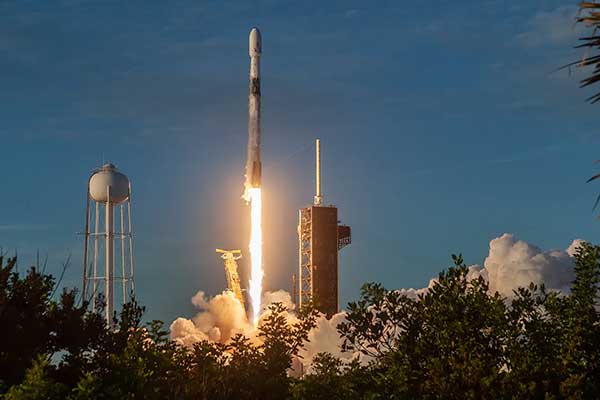SpaceX and NASA Partnership Makes Positive Progress in Aerospace Industry

ECE Professor Taskin Padir talks about NASA’s partnership with SpaceX and how it will positively progress NASA’s research and help advance technology in the aerospace industry.
This article originally appeared on Northeastern Global News. It was published by Cesareo Contreras. Main photo: A SpaceX Falcon 9 rocket lifts off from launch pad 39A at the Kennedy Space Center. (Photo by Manuel Mazzanti/NurPhoto via AP).
Can SpaceX help NASA get back to the moon by 2027?
With a target of heading back to the moon by mid-2027, NASA is betting big on its multibillion-dollar public-private partnership with SpaceX, the Texas-based rocketmaker helmed by technology billionaire Elon Musk.
However, technical challenges could threaten the launch service provider’s ability to meet the U.S. space agency’s ambitious deadline.
Last week, the company successfully launched its 11th test flight for Version 2, or V2, of its Super Heavy Starship. The next step is the testing of Starship V3, which will be used for testing of “orbital flights, operational payload missions [and] propellant transfer,” according to the company.
That’s welcome news for NASA, which plans to use the rocket as part of its mission to send astronauts back to the moon to explore its southern poles. Scientists believe that icy water lies just below that area’s surface, which would be key in developing long-term lunar settlements as part of NASA’s Artemis program.
NASA’s Artemis project was officially formalized in 2017 as part of a four-mission project, for which SpaceX will play a key role.
But while the recent launch is certainly good news, Sophia Economides, head of engineering and physics on Northeastern University’s London campus, cautions that remaining technical obstacles could throw SpaceX off track.
“With only two years to go, it seems difficult to achieve that deadline at the moment, because what NASA and SpaceX are proposing is something that has been discussed since the 1990s,” she says. “It is on a much bigger scale than what has been attempted before.”
NASA and SpaceX’s plan has been described as ambitious and complex. As part of NASA’s Artemis III mission, SpaceX is creating a Starship Human Landing System — a variant of the Starship rocket system — for NASA astronauts traveling aboard the Orion spacecraft. The landing system — which will be orbiting the moon — will dock with the Orion spacecraft and ferry two astronauts to the moon’s surface and back up again.
But both NASA and SpaceX still have a lot of work to get there.
Transportation Secretary Sean Duffy in an interview with CNBC on Monday shared that the agency believed SpaceX is behind schedule, and that it would soon open its contract to let other competitors apply.
Read full story at Northeastern Global News